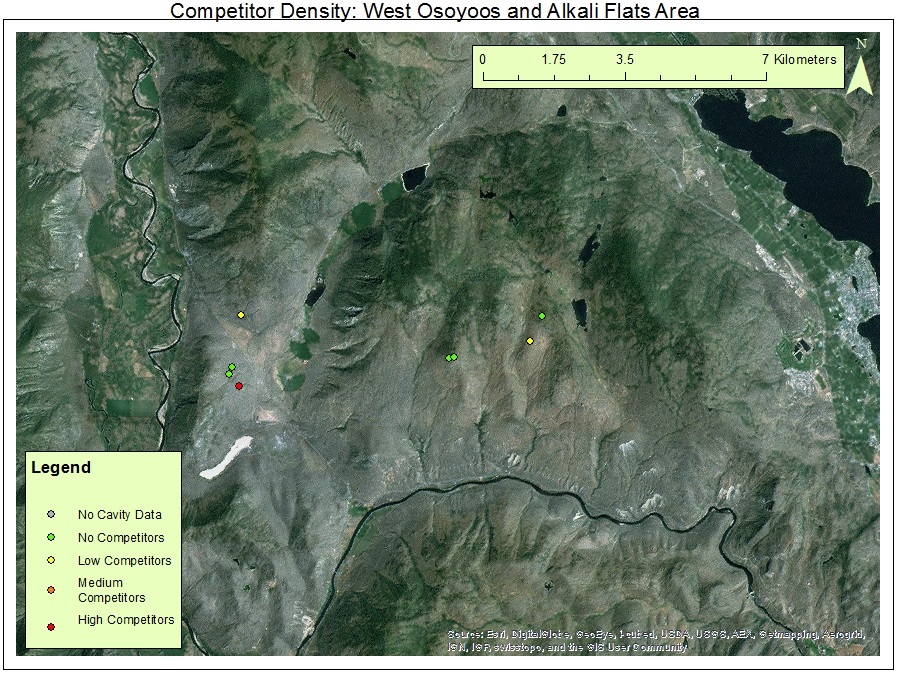Results
What did we find out?

The average distance of nest locations to their foraging locations ranged from 27 meters to 172 meters, with an overall average of 100 meters. The range and area calculations of a nest and its foraging locations ranged from 1089 meters squared to 133024 meters squared, with an average of 35474 meters squared. Again, these calculations were performed only on nests that had foraging locations linked to it. The average distance of nest locations to water and urban areas is 6223.8 meters and 5090.4 meters respectively. A possible explanation for the lower distance to urban areas may be due to the fact that there are orchards near these urban areas and some of these birds simply live in an area that is designated as an urban area. As such, some nests have a distance of 0 meters to the closest urban area. The competitor and starling ratios showed that only a few nests had competition within a 50 meter radius. For all competitors, there were 23 out of 47 nests that had competitors, with three of them having high competition. For only the European Starling, there were 18 out of 47 nests that had the Starling as a competitor, with one of the nests having high Starling competition. Two of the nests had no cavity data so they were given a value of -1 for classification. The ratios were classified as follows:
-1 = No Cavity Data
0 = No Competitors
0 - 0.33 = Low Competitors
0.34 - 0.66 = Medium Competitors
0.67 - 1.00 = High Competitors
Want to explore the data?
You can find the data that we've created in the links below:
